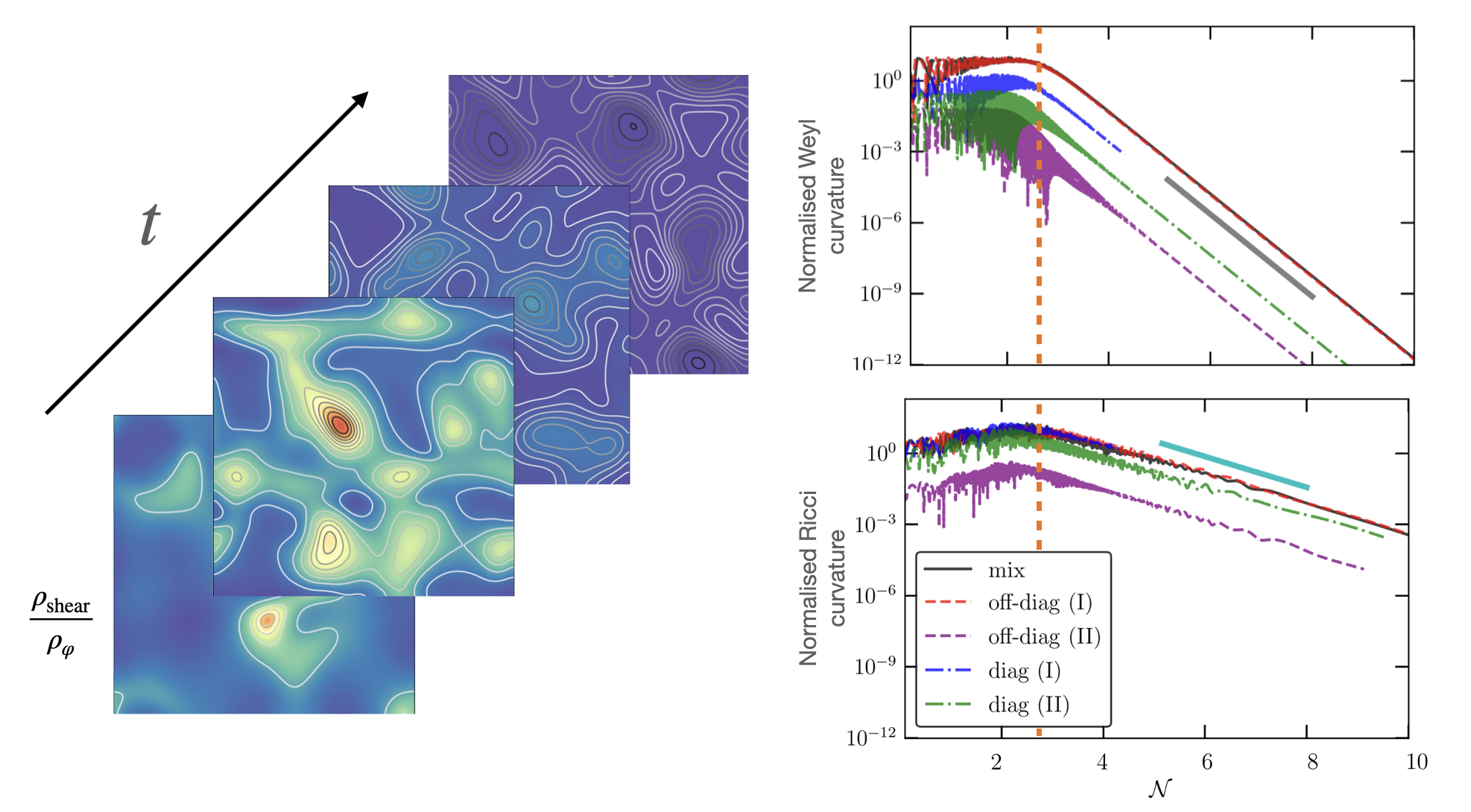
Cosmic inflation was proposed as a mechanism to explain the flatness and homogeneity of our Universe at very large scales. Indeed, if we go backwards in time 13.4 billion years, we would see a vast non-causal region ( (\ \sim 10^5 ) Hubble radius) of our Universe roughly at the same temperature and with extremely low curvature. A possible explanation is that the Universe underwent a rapid accelerated expansion phase, red-shifting gradients and curvatures for at least 60 e-foldings, i.e., ( a_{\rm end} = a_0 \cdot e^{60} ). In the simplest models of inflation, the accelerated phase of the Universe is driven by a single scalar field, named the inflaton.
However, almost since its conception, it has been questioned whether inflation could really homogenise, or even begin from, an initial Universe plagued by strong scalar field gradients and gravitational metric perturbations. Previous numerical relativity simulations have shown that small-field inflation models are indeed in trouble, but large-field inflation models such as Starobinsky or Higgs inflation (the most favoured by Planck observations) are shown to be very robust to inhomogeneous scalar field configurations, as we demonstrated in arXiv:2011.12190.
In my latest paper, arXiv:2406.00811, we extend these findings by proving that large-field inflation models are also robust to inhomogeneities in the gravitational sector, including scenarios with large shear and tensor modes, as well as Weyl curvatures. My simulations show that inflation can start and smooth out these curvatures, reinforcing the idea that inflation is a powerful mechanism capable of creating the observed homogeneous and isotropic Universe from a variety of initial conditions.

Fig. 1 Snapshots of the shear-scalar field energy densities. The evolution of the Weyl Curvature and Ricci Curvatures normalized by the expansion rate squared $H^2$.
These results directly challenge the claims made by Ijjas and Steinhardt, who argued that inflation cannot start from configurations with large Weyl curvatures. Our simulations invalidate their conclusions. However, we point out that their work interestingly implies that inflation might indeed have trouble starting if non-locality is violated. In their simulations, they implicitly consider strong kinetic super-Hubble modes in the gravitational metric tensor. Under these conditions, it would be plausible to achieve spatio-temporal distortions that overpower the expansion rate, inducing contraction along some spatial directions. If this occurs, gradients and curvatures would no longer redshift but blueshift as the contraction becomes more acute.
While this possibility needs to be addressed (and confirmed) in future investigations, a question that might still lurk around is: While classical Cosmological Perturbation Theory shows that (linear) tensor modes freeze their evolution at super-Hubble scales, is there any possibility that the early quantum gravity regime propitiates non-local gravitational dynamics in the early Universe? Can a spooky action at a distance doom the inflationary beginning of a local Universe? Can this impossibilitate the onset of inflation everywhere? Would that be in agreement with the postulates of General Relativity, or would need superluminal propagation of gravitational waves…
Stay tuned for new insights!